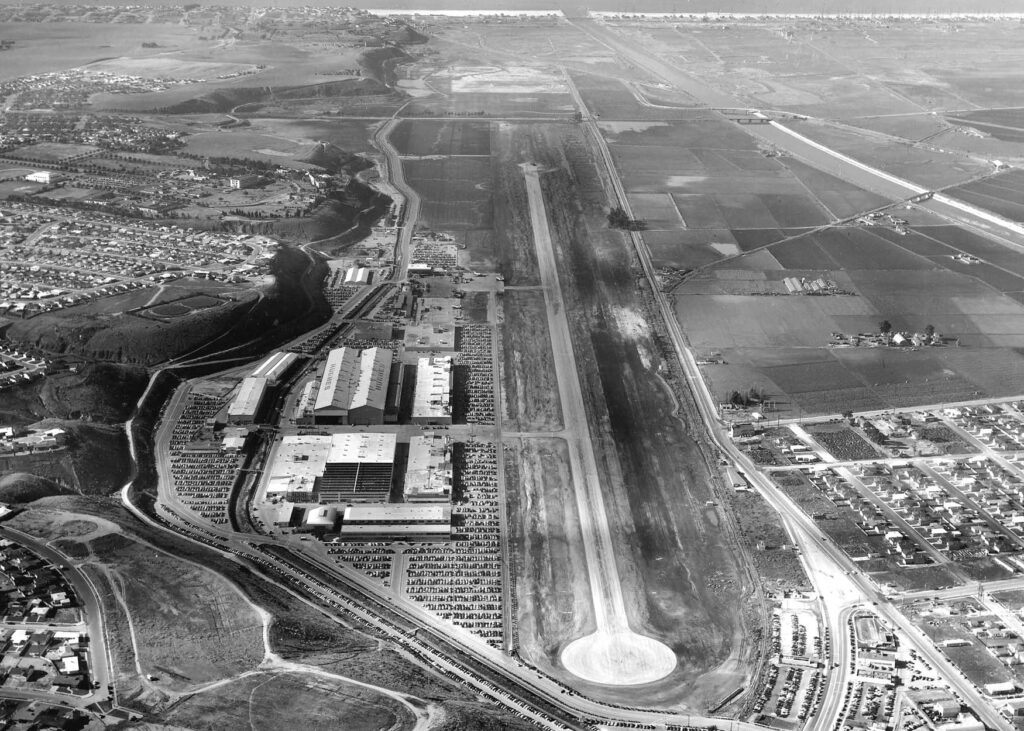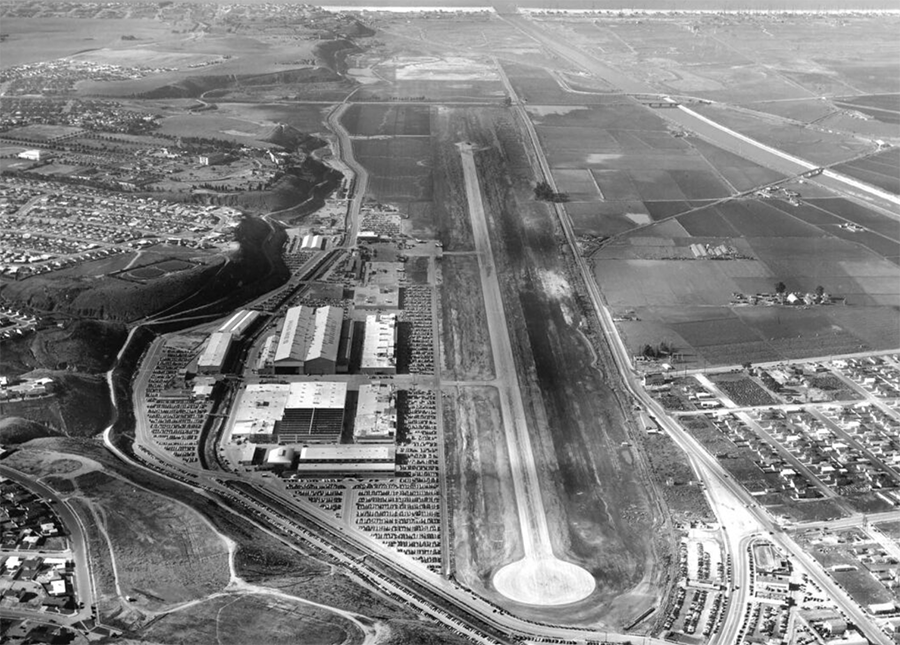By Cozette Vergari
Jumping back on board our time travel machine, we continue our adventures into the past and, as a reminder, we board each time from today’s Westchester/Playa geographic footprint. Though we’ve been standing still, our time machine has magically taken us from 65,000 BCE to the 20th century. Our last adventure took us forward from 1912 and the first of many air races at Mines Field, then a small airfield set in the rural outskirts of the city of Los Angeles and located at what is now the eastern edge of LAX. We sped forward and stopped in the 1920s, where we saw a young Fritz B. Burns, just 22-years-old, opening the land sales office for Palisades del Rey, which still stands and today is home to Tanner’s Coffee Co., as well as Flowers by Felicia among others. It is located where Culver Boulevard makes its turn south and becomes Vista Del Mar. The Surfridge land development project sat on the cliffs above. The crash of Black Tuesday on October 29 dramatically interrupted these two developments and was the moment in time we last witnessed.
We have now stopped in the 1930s, a time of desperation for many. We see from our time machine, Fritz B. Burns living in a tent at what we now know as Toe’s Beach, despite owning several pieces of undeveloped real estate in the area. In an attempt to rally his resources, we see Burns negotiating the purchase of the former dormitories from the 1932 Los Angeles Olympiad Village in Baldwin Hills. After record-breaking heat in the summer of 1931, which hovered around 100 degrees for the entire summer, and seeing as many as 350,000 people fleeing to the beaches between what is now Playa del Rey and the Ocean Park Pier in Santa Monica, Burns recognizes the potential popularity of beach living and foresees relocating and using the Olympic dormitories as rental cottages. We also witness Burns enlisting the Herndon Oil Company to prospect for oil on his real properties.

The 1932 Los Angeles Summer Olympics had been a financial disaster, with less than half of the countries that participated in the 1928 summer games choosing to attend due to the worldwide economic downturn set off by Black Tuesday. President Herbert Hoover became the first sitting head of a government to miss their country’s hosted Olympics. We notice the organizers are selling anything and everything in an effort to recover from their financial losses. After successful negotiations and acquiring the dormitories, we are watching Burns arrange for their relocation to the beach where he is living and renaming it to Olympic Beach.
Moving east from the beach, we are seeing the success of Loyola University on the bluffs of what is now Westchester, surrounded by nothing but farmland, a few homes and a few rundown farmhouses. Initially, the bluffs had been targeted for the Del Rey Hills land development, and would have been parcels of land sold to potential homeowners. Harry Culver, the founder of Culver City, donated 100 acres of what was to be Del Rey Hills to build and relocate the Loyola College of Los Angeles, from what is now Loyola High School, to the bluffs on the east side of Lincoln Boulevard in 1929.
Loyola College of Los Angeles earned university status by 1930 after opening its campus on the bluffs. Culver and Burns had also jointly donated 100 acres on the bluffs west of Lincoln Boulevard to build a Lutheran college, which never came to fruition.
Moving southwest from the bluffs, we witness the boom of aviation in this footprint. Mines Field, the site for the newly opened (1930) airport servicing the city of Los Angles is now being purchased by the city in 1937. The main airport for Los Angeles at this moment in time is the Grand Central Airport in Glendale. However, at this same time in the 1930s, we start to see the aircraft manufacturing industry swell, and this area becoming the major center of aviation-related industry. We observe large plants being built for Douglas Aircraft, North American Aviation and Howard Hughes Aircraft.
It is 1938, and we are back standing atop the bluffs. After years of serious flooding, which even caused deaths to some residing throughout the Los Angeles region, we find ourselves looking down on what is now Playa Vista and Marina del Rey. The area is completely underwater due to a pair of oceanic storms. The storms have made the area inaccessible by normal transportation for months. The water level of the intersection of Lincoln and Jefferson Boulevards is 20 feet deep. Ballona Creek, which weaves throughout the region for nearly 15 miles from the ocean inland, has caused repeated devastation to developing communities in Los Angeles. Out of necessity for safety to the emerging neighborhoods in Los Angeles, the creek is being channelized by the U.S. Army Corp of Engineers. As we observe them, they line the creek with concrete and boulders brought more than 26 miles from Catalina Island on barges.
At the same time, in 1938, we make an about-face in our time-travel machine and witness the birth of the Woman’s Club of Playa del Rey. The organization still continues to serve our local community today with the mission to promote civic improvement, cultural interest and philanthropy.
Stay tuned for our next journey, which will take us into the 1940s and 50s, where we will see the leadership of female pioneers in our local community. Honoring those women of history—or “herstory–” the Westchester/Playa Historical Society will open its next exhibition on March 20 at the Discovery Center.
The “Celebrating Women” exhibit is very generously being sponsored by the Woman’s Club of Playa del Rey and coincides with National Women’s Month. The exhibit will run through May 15 and is open to the public each Sunday between 9 a.m. and 1 p.m. or otherwise by appointment.
Following that exhibit, the WPHS will open the“Commemorating Veterans” exhibit. The exhibit will run from May 29 through June 26.
If you know a Westchester/Playa area veteran that we can honor in the exhibit (including posthumously), we invite you to submit their names, photos and their branch of service. Please submit to info.wphistorical@gmail.com.
In the meantime, visit the Westchester/Playa Historical Society Discovery Center in the Westchester Triangle during its operating hours or by appointment. Learn more at wphistoricalsociety.org. The Discovery Center is located in the Westchester Triangle at 6207 W. 87th Street in Westchester.
Cozette is an attorney and lifelong resident of Westchester. She is the President of the Westchester/Playa Historical Society. Together with a group of dedicated volunteers, the organization is working on creating new programming and events to celebrate the history of the area and engage the community in preserving it for future generations.

